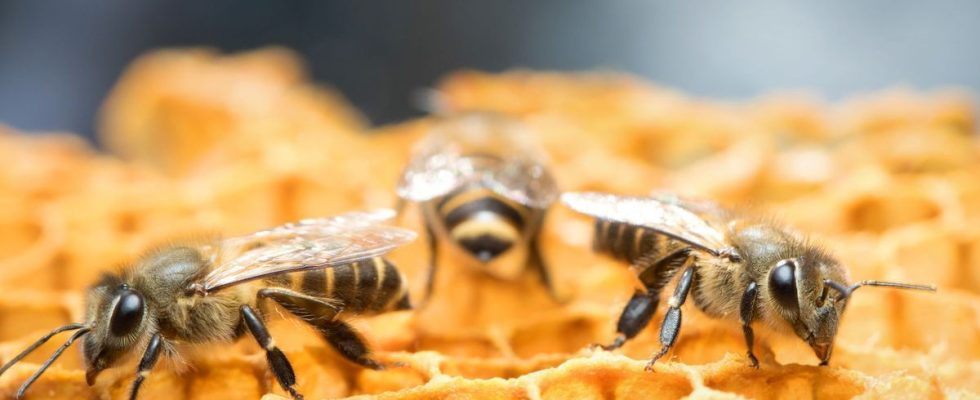Published on
Updated
Reading 1 min.
Urban bees can be used to better understand the invisible landscape of our cities, made up of potentially very important microorganisms for our health, according to a recent study.
Researchers, whose findings appear in the journal Environmental Microbiome, started by conducting a pilot study with honey bees from the New York district of Brooklyn, before extending their research to four other cities (Melbourne, Sydney, Tokyo and Venice). The aim was to better understand the microbiome of cities, i.e. all the micro-organisms (bacteria, fungi, viruses, etc.) present there.
Using bees to monitor certain diseases?
They postulated that these insects, which can travel more than a kilometer and a half around their hive in the city, could be valuable for the collection of these urban microorganisms, avoiding entrusting this laborious task to humans.
“This method is more suitable for the scale of urban spaces than other sampling methods, for example by swab”explained to AFP Elizabeth Hénaff, of New York University, co-author of the study.
Scientists have indeed found various genetic information, different depending on the city, in the debris accumulated in the hives. “The interest of studying the urban microbiome is that the environmental microbiome is very important for human development and health”underlines Elizabeth Hénaff.
The study indeed refers to other research which increasingly tends to prove that our well-being depends on our interactions with bacteria and fungi. The researchers were thus able to find traces of a pathogen that is transmitted from cats to humans, suggesting that it would be theoretically possible to use bees as a “potential” means of monitoring certain diseases.
In search of the healthy microbiome
But the authors temper this aspect of their discovery. “Our interest is rather to be able to characterize the ‘healthy’ microbiome of urban areas, given that the majority of microbes are beneficial or even essential for human health”, insists Elizabeth Hénaff.
“This opens us up to the more general idea that it is possible to detect pathogens” in this way, concluded Kevin Slavin, independent researcher and co-author of the study, during a press conference.
But he does not bet everything on bees either – whose activity is notably marked by the seasons – for this, suggesting that other species close to man could perhaps one day do this work.
